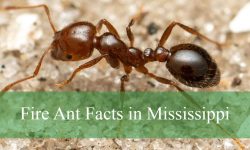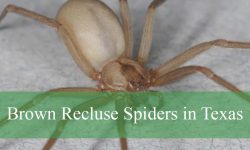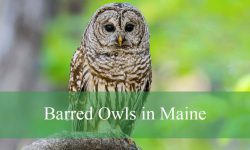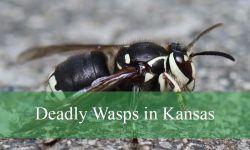Hawaii is often celebrated for its stunning landscapes, tropical climate, and incredibly diverse flora and fauna. From volcanic mountains to rainforests and coral reefs, the Aloha State seems to have it all. But when it comes to squirrels, many visitors and even residents ask the same puzzling question: are there squirrels in Hawaii?
At first glance, it may seem like squirrels should be just as common in Hawaii as they are in mainland America. After all, squirrels are highly adaptable mammals and have managed to populate urban parks, rural woodlands, and even deserts throughout the United States. Yet, when one strolls through the lush greenery of Oahu or hikes the forest trails of Kauai, sightings of these energetic rodents are conspicuously absent. This mystery invites a deeper look into the ecological history of Hawaii and the factors that determine which animals thrive—or fail to establish themselves—on the islands.
In order to fully understand the absence or presence of squirrels in Hawaii, it’s important to consider both the ecological barriers and the impact of human intervention over time. Hawaii’s isolation, situated over 2,000 miles from the nearest continental landmass, has shaped an ecosystem unlike any other on Earth. The animal species that do exist there often arrived through unique circumstances—via air, ocean currents, or human activity—and the squirrel’s story is surprisingly entangled in this narrative.
Native Wildlife of Hawaii: An Isolated Ecosystem
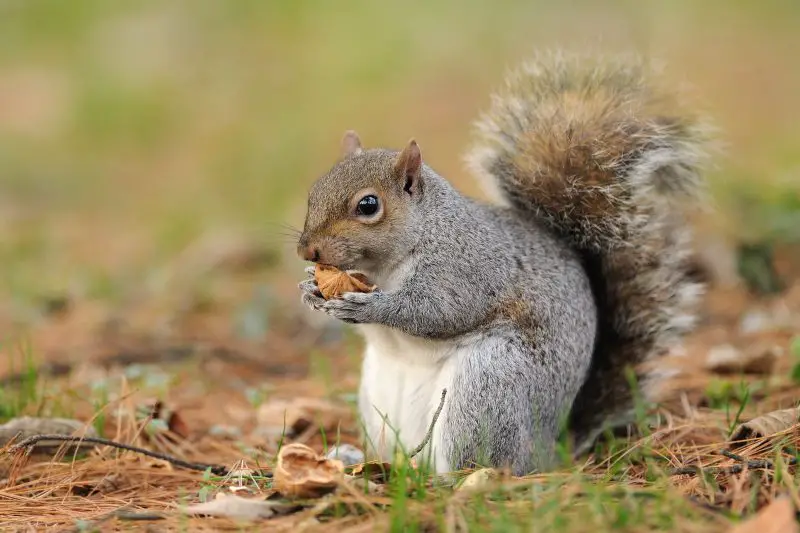
The Hawaiian Islands were formed through volcanic activity over millions of years, emerging as barren landmasses in the middle of the Pacific Ocean. As life slowly colonized the islands, only the most mobile species—such as birds and insects—were able to establish a presence naturally. This geographic isolation gave rise to an ecosystem filled with endemic species, many of which exist nowhere else in the world.
Unlike mainland North America, Hawaii lacks most native land mammals. The only mammal believed to have existed on the islands before human arrival was the Hawaiian hoary bat, which likely arrived by flying from North America or Asia. All other mammals—including pigs, goats, cats, and rats—were brought to the islands by Polynesian voyagers and later by European settlers.
Because squirrels are not strong swimmers and cannot travel long distances over water, they were never naturally introduced to Hawaii’s environment. Their absence in the native ecosystem meant that no other species evolved to interact with or depend on squirrels in any significant way. This isolation preserved Hawaii’s ecological integrity for centuries but also meant that new species introductions could pose major threats to native wildlife.
Human Influence and Introduced Species
As humans began to settle and develop the islands, a wide range of species were introduced—both deliberately and accidentally. These non-native species disrupted the delicate balance of the islands’ ecosystems, often outcompeting or preying on native flora and fauna. Mongooses, for example, were introduced in the late 1800s to control rat populations in sugarcane plantations, but they quickly turned into a threat to ground-nesting birds.
Despite the widespread introduction of animals over the centuries, squirrels were never among them. While some speculate that pet squirrels or zoo specimens may have existed in captivity at some point, there has been no successful or widespread release of squirrel populations in Hawaii. Unlike pigs or goats, which were brought for agricultural purposes, or rats and mice, which arrived unintentionally aboard ships, squirrels have had little practical value for introduction to an isolated ecosystem like Hawaii.
There have been isolated reports and rumors of squirrels being spotted on certain islands, but these accounts are rarely confirmed and often turn out to be misidentifications. In some cases, observers have confused small Indian mongooses or even certain native birds with squirrels due to their swift movements and similar sizes.
Why Squirrels Never Made It to Hawaii
The absence of squirrels in Hawaii is not merely a coincidence; it’s the result of several key factors that have prevented their introduction and establishment. The first and most obvious is the geographic isolation of the islands. Without a direct land bridge or easy access via natural migration routes, squirrels have had no pathway to Hawaii without human assistance.
Secondly, the state has established strict regulations on the importation of animals to protect its fragile ecosystems. The Hawaii Department of Agriculture enforces stringent biosecurity measures at airports and ports to prevent the introduction of potentially invasive species. These rules are not only designed to keep out pests like snakes and certain insects but also animals that could disrupt the ecological balance—squirrels included.
Moreover, there has never been a cultural or economic incentive to bring squirrels to Hawaii. Unlike livestock or domesticated pets, squirrels serve no agricultural function and are not commonly kept as companion animals. Their potential as invasive species outweighs any perceived benefit, especially given Hawaii’s long history of grappling with ecological damage caused by other introduced animals.
Lastly, the environment of Hawaii, while rich in vegetation and trees, may not fully meet the habitat requirements for certain species of squirrels that depend on seasonal food availability and temperate climates. Even if they were introduced, it’s unclear how well they would adapt or whether they would become a problematic presence like other non-native mammals.
What About Similar Rodents?
Although squirrels themselves are absent from Hawaii, the islands are home to a few rodents—none of which are native. The most common are rats and mice, both of which were introduced through human settlement. These rodents have adapted remarkably well to Hawaii’s environment, often becoming pests in both urban and natural areas. Roof rats and Norway rats are especially widespread, and they are frequently found in homes, fields, and forests.
Another rodent-like creature occasionally confused with squirrels is the small Indian mongoose. This sleek and agile mammal was introduced to control rat populations, but its unintended consequences have had lasting impacts. Its movements can resemble that of a squirrel, leading to occasional confusion among observers unfamiliar with the species.
Despite their superficial similarities, none of these animals fill the same ecological niche as squirrels. Rats and mongooses do not engage in the same behaviors—such as nut caching or tree-dwelling lifestyles—that are characteristic of squirrel species on the mainland. As such, Hawaii lacks the kind of arboreal rodent population found throughout North America, further distinguishing its ecosystem.
The Impact of Keeping Squirrels Out
Hawaii’s decision to prohibit and prevent the establishment of squirrel populations is one rooted in ecological preservation. While squirrels are often viewed as harmless or even charming in other parts of the country, their potential as invasive species is real. In environments where they are non-native, squirrels can outcompete birds for nesting sites, damage crops, and alter vegetation patterns through their foraging habits.
By keeping squirrels out, Hawaii reduces the risk of these negative outcomes and preserves the delicate interdependence between its native species. This careful management is part of a broader effort by the state to protect its biodiversity and unique natural heritage. Invasive species are already a major concern in Hawaii, with numerous plants and animals classified as threats to native ecosystems.
Furthermore, public education campaigns and rigorous quarantine policies help ensure that potential introductions are intercepted before they become ecological disasters. This commitment to conservation is one reason why many of Hawaii’s native species, though endangered, still have a chance of survival in their natural habitats.
Could Squirrels Ever Be Introduced in the Future?
Though there is currently no active plan or proposal to introduce squirrels to Hawaii, the idea remains a theoretical possibility. It would require significant legal and logistical changes, not to mention scientific evaluation of the potential risks and impacts. Conservationists would likely oppose such an initiative due to the precedent set by other introductions gone wrong.
Even as curiosity grows among tourists and new residents about the absence of squirrels, the consensus among ecologists is that their introduction would do more harm than good. The goal is not to make Hawaii’s ecosystem more like the mainland but to preserve the uniqueness that makes it so valuable and irreplaceable.
In the unlikely event that squirrels did find their way to Hawaii—through illegal importation or accidental escape—the state has protocols in place to manage such situations. Early detection and rapid response teams work to eliminate invasive species before they become established. This proactive approach is critical for maintaining ecological balance in such an isolated environment.
Wildlife Wonders That Do Exist in Hawaii
While squirrels are notably absent, Hawaii is far from lacking in fascinating wildlife. Native birds like the ‘I‘iwi and the Nēnē (Hawaiian goose) offer glimpses into the islands’ evolutionary past. Sea turtles, monk seals, and spinner dolphins grace the shores and waters, while colorful insects and endemic plants showcase the islands’ incredible biodiversity.
For visitors looking to experience Hawaii’s nature, the absence of squirrels may come as a surprise, but it also opens the door to a different kind of wonder. Instead of watching squirrels scamper across power lines or dig up flower beds, one might witness a rare honeycreeper flitting through an ohia tree or catch sight of a bat flying at dusk over a volcano’s rim.
By shifting the focus from what’s missing to what’s thriving, Hawaii offers a richer understanding of how ecosystems evolve and why conservation efforts matter. In the end, the islands remind us that nature’s balance is not about replicating what we’re used to but appreciating what exists in harmony with its surroundings.
FAQs About Squirrels in Hawaii
Are squirrels illegal in Hawaii?
Yes, squirrels are considered a prohibited species in Hawaii due to their potential to become invasive. The state enforces strict regulations that prevent the importation of squirrels without special permits, which are rarely granted.
Has anyone ever seen a squirrel in Hawaii?
There have been unverified reports of squirrel sightings, but these are typically cases of mistaken identity involving mongooses or rats. No established squirrel populations exist in the state.
Why do some people think squirrels live in Hawaii?
Visitors from the mainland may assume that squirrels are everywhere in the U.S., leading to the mistaken belief that they should also be found in Hawaii. Others may confuse similar-looking animals with squirrels.
Would squirrels survive if released in Hawaii?
While Hawaii’s environment may support certain squirrel species, their presence could threaten native wildlife and habitats. Their survival might be possible, but it would likely result in ecological harm.
Are any efforts underway to introduce squirrels to Hawaii?
No current efforts exist to introduce squirrels, and such a plan would likely face strong opposition from conservation groups and environmental agencies.
Conclusion
The question of whether squirrels live in Hawaii reveals much more than a simple yes or no answer. It touches on the complexities of island ecology, the history of human influence, and the ongoing efforts to protect one of the world’s most delicate natural environments. While squirrels are a common and even beloved part of many mainland ecosystems, their absence in Hawaii serves as a testament to the importance of ecological balance and the dangers of invasive species.
Hawaii’s wildlife may not include squirrels, but it offers a world of natural beauty and biodiversity that is every bit as captivating. Understanding why squirrels aren’t present adds to the appreciation of what makes the islands so uniquely remarkable—and why preserving that uniqueness is a responsibility that extends to us all.

